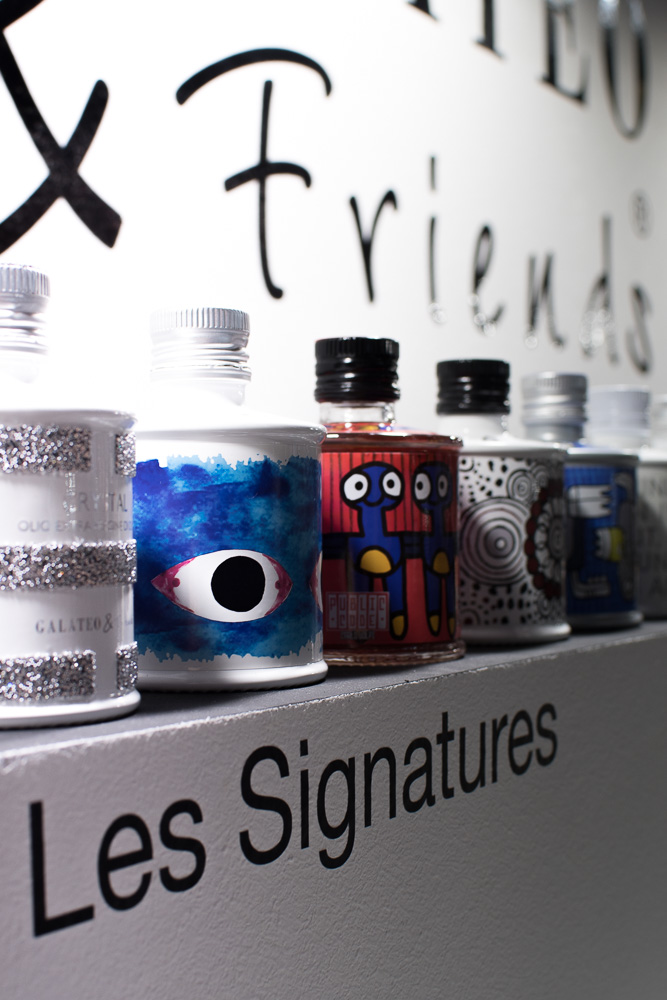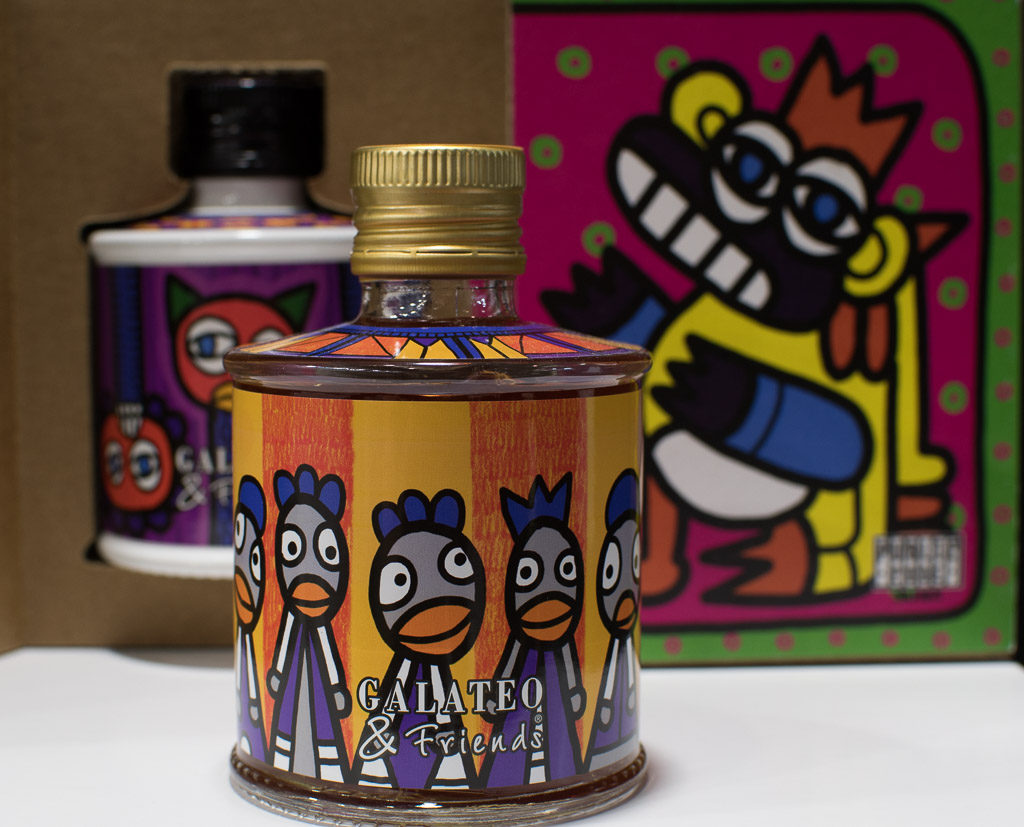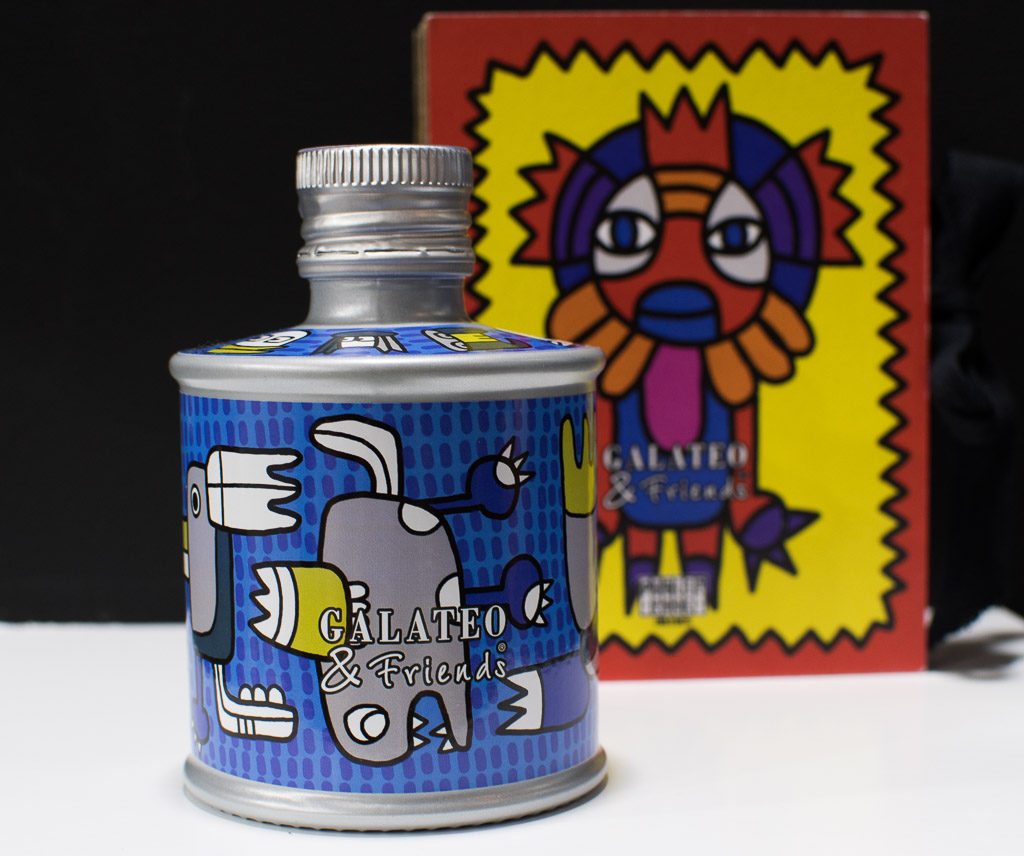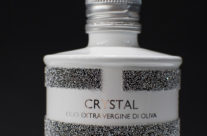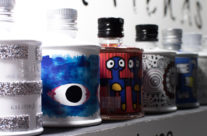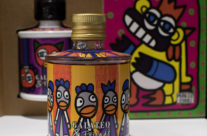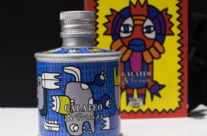In addition to the new products, we detected at the SIAL food trade show, we also spotted some original collaborations between brands. This is what we call co-branding. In this article, we briefly present 2 interesting examples that turn a standard product into a collector’s or even a luxury item.
Galateo & Friends: 2 distinct co-brands
Galateo & Friends proposes a line of olive oils recognizable by their upmarket bottles. Their “Les signatures” line reflects the marketing approach of Château Mouton-Rothschild: each year, the bottle is signed by a different artist or is the fruit of a different collaboration. It’s a permanent co-branding operation that forms part of the brand’s marketing mix. The bottles signed by designer Carlo Volpi, for example, come in 4 different versions sold in a box.
Even more exceptional is the “Crystal” bottle created with Swarovski (see photo below). So, this is a separate co-branding operation, the one with the artists).
As you can see, co-branding can be applied to a wide range of associations:
- with artists, on the one hand
- with another brand (Swarovski).
However, care must be taken to base only some marketing on associations with other brands. Developing your own attractive identity must remain a priority. Occasional co-branding operations will make more sense and reinforce each of the 2 brands.
In olive oil marketing, packaging is an essential factor in seducing consumers and standing out from the competition. Our market research agency conducted a project in which we showed that 60% of the initial purchase decision could be based on external criteria (shape, design, label). The shape of the bottle, for example, must not only preserve the organoleptic qualities of the oil but also convey a brand image.
Label design plays an essential role in brand recognition. The label communicates values in addition to legal information. A clear, attractive, and informative label can increase brand recognition and encourage impulse buying.
In short, well-designed packaging is a powerful marketing tool for olive oil producers. It’s not just about protecting content but also about communicating effectively with the consumer and reinforcing the brand’s image to drive sales. However, a balance must be maintained between the cost of the container and the cost of the content. A common mistake in the olive oil market is to invest more in external aspects than in the intrinsic quality of the product (the oil). In the end, it’s the quality of the product that will satisfy customers and win their loyalty.
Di Martino and Dolce Gabbana
Another notable collaboration is that of century-old artisan pasta company Di Martino with Dolce & Gabbana.
The foundations for this collaboration were laid in September 2017, when Dolce & Gabbana sought a partner to promote “Made in Italy.” After a first successful association with Smeg, Domenico Dolce and Stefano Gabbana’s choice fell on Di Martino, already spearheading Made in Italy using exclusively Italian flours.
The star couple of Italian fashion has taken over Di Martino’s packaging to celebrate Neapolitan tradition and offer two distinct products:
- Pasta over 50 cm long (a Di Martino classic) sold in D&G’s signature packaging (1 kg for 7 to 10€)
- A metal collector’s box (3000-4000 units produced) including 3 x 500 g pasta packs and a D&G apron (retail price: 120€).
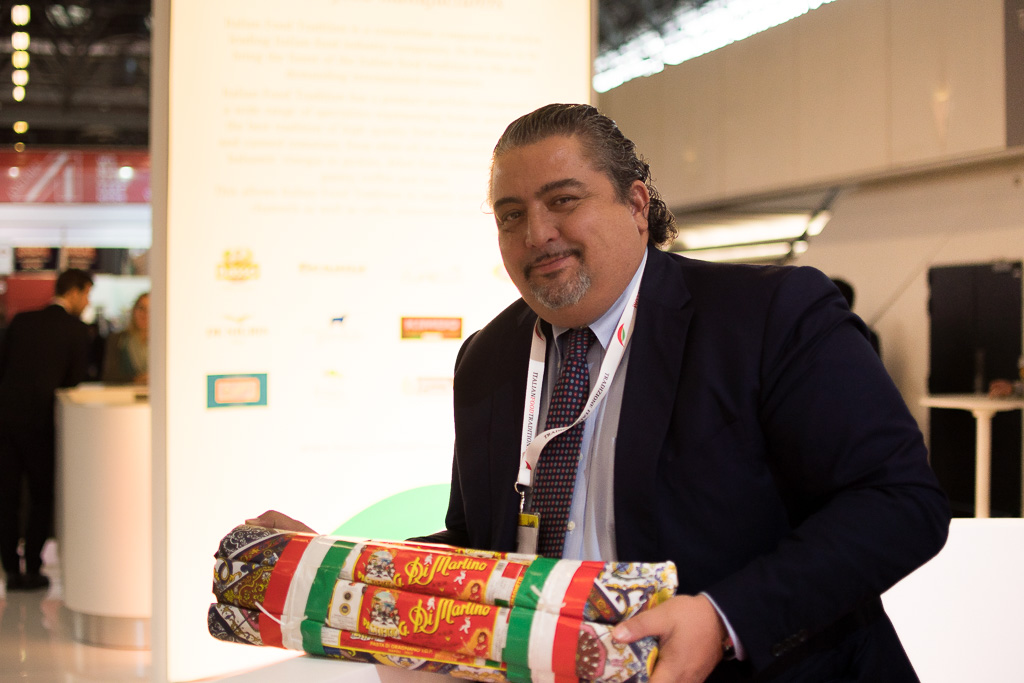
Giuseppe Di Martino proudly presents the product of his collaboration with Dolce & Gabbana.
In conclusion
These examples of co-branding are, of course, unique and go beyond the strict confines of the food market. They are more collector’s items than actual food products. The market for this type of product is extremely specific, with sales concentrated in Russia, Asia, and the Middle East.
Posted in Marketing.

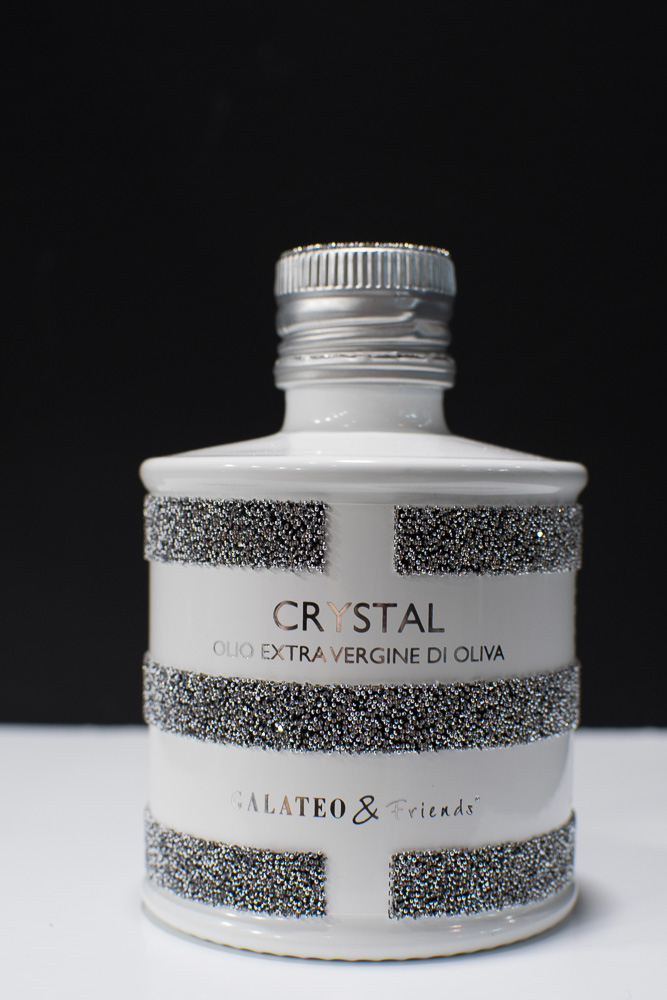
 1/4
1/4 